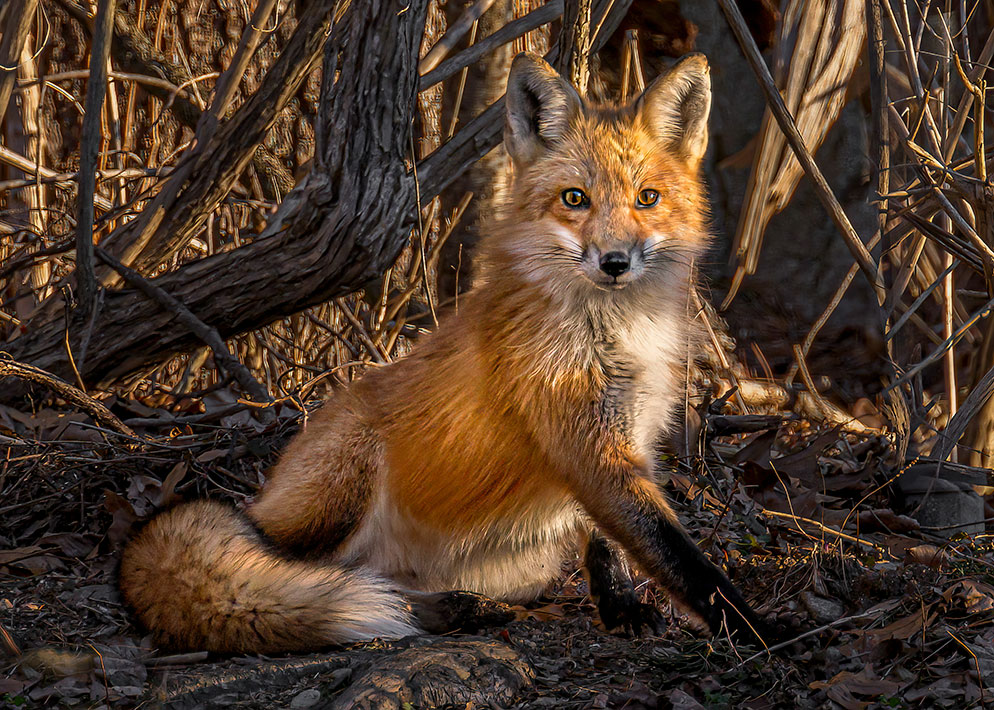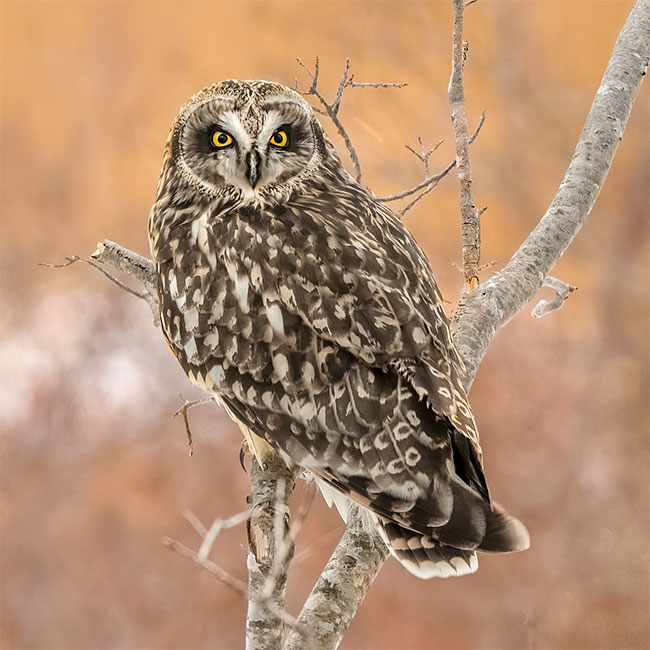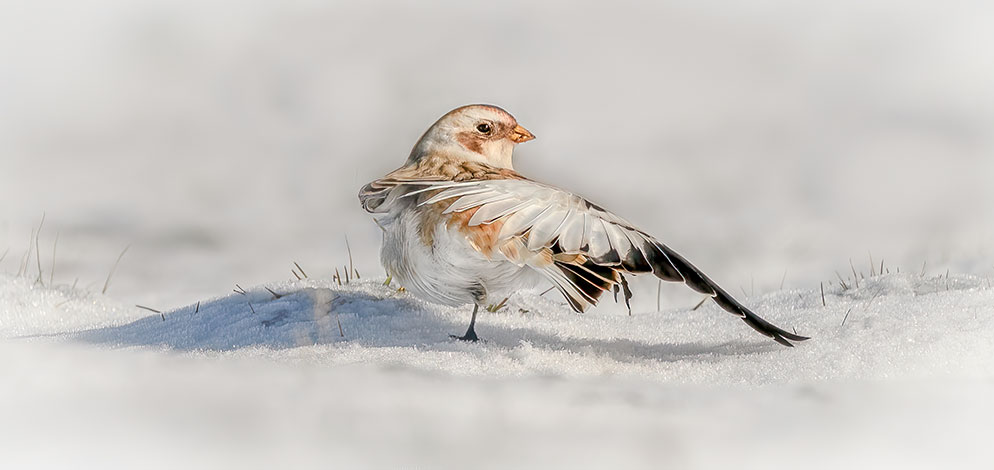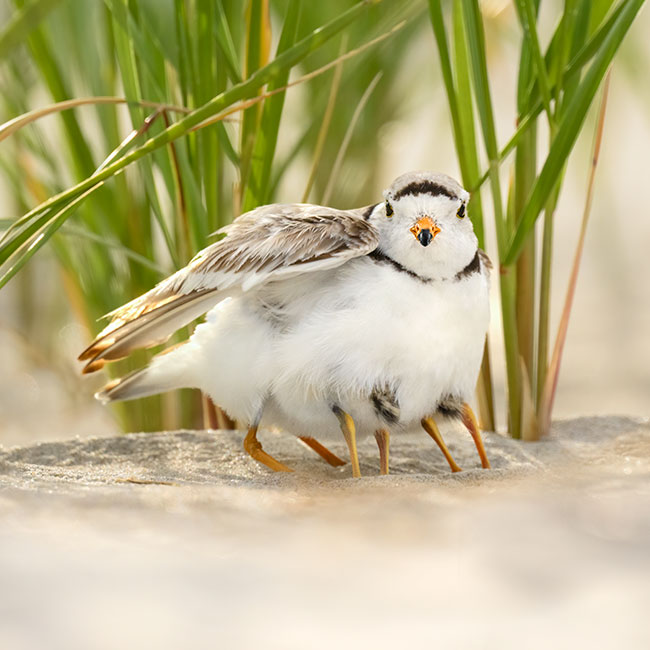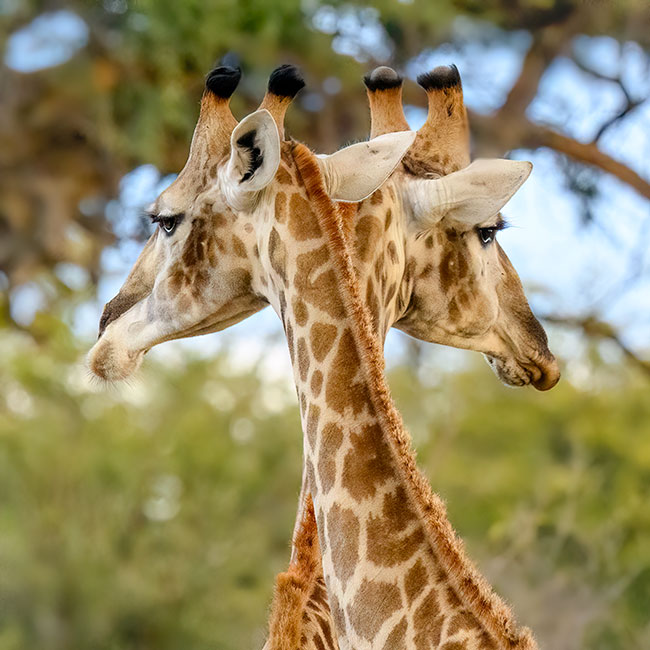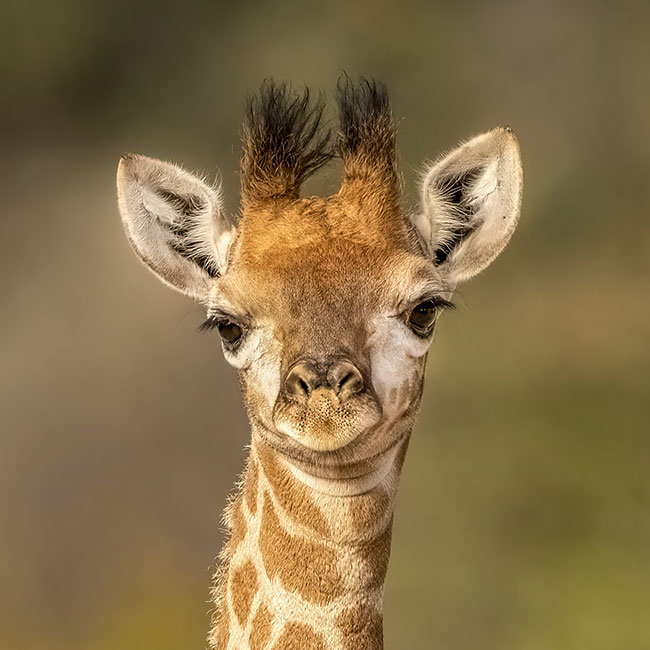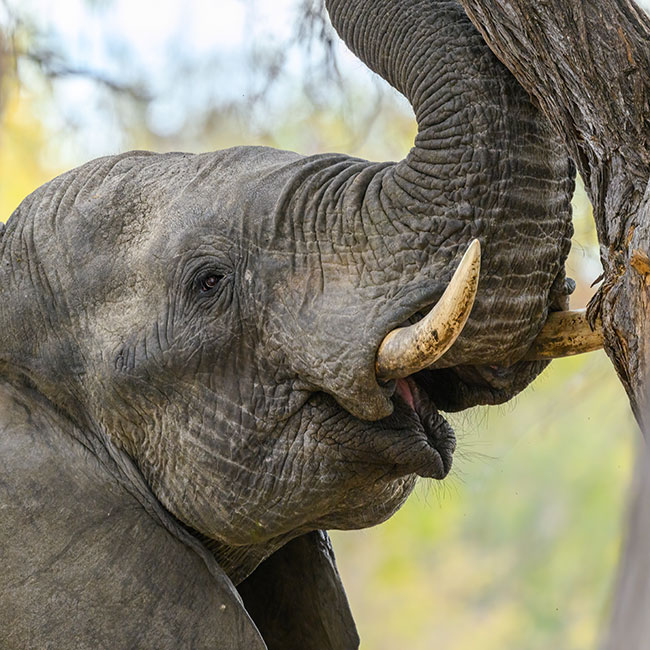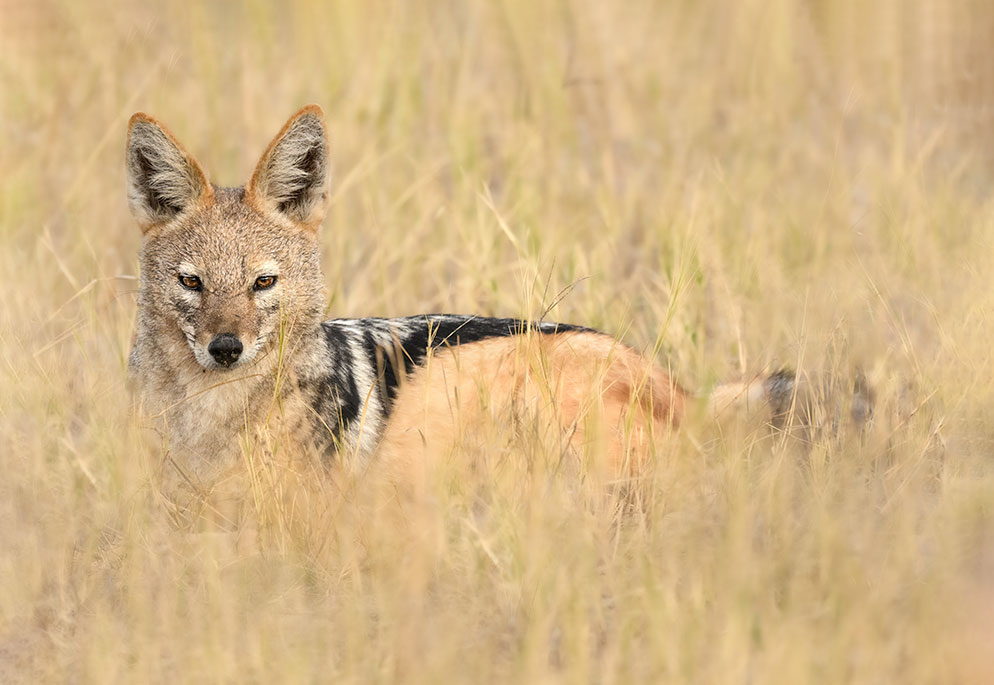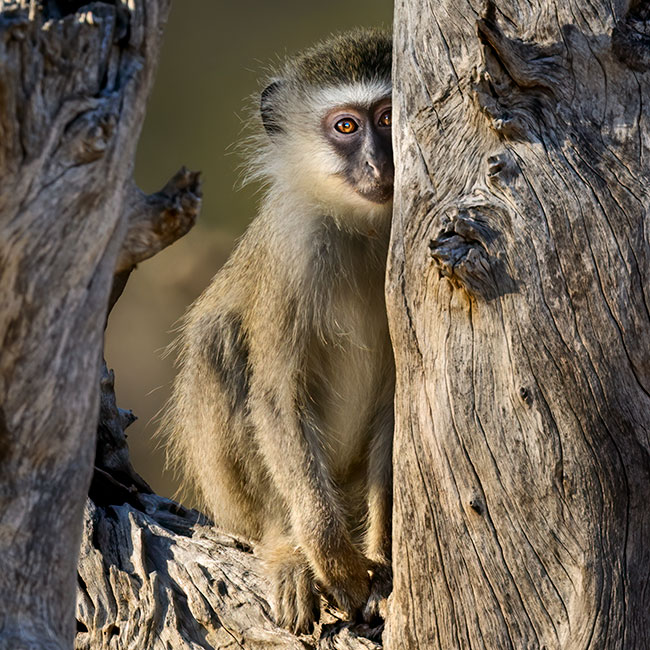Eye Contact: The Art and Craft of the Wildlife Portrait
Driving to a restaurant near her home, Gillian spotted this fox across a rocky field. There was no choice: it was a stop-the-car moment. Z 9, NIKKOR Z 100-400mm f/4.5-5.6 VR S, Z Teleconverter TC-1.4x, 1/250 second, f/10, ISO 800, aperture-priority exposure, highlight-weighted metering.
Our talk with Gillian Overholser began with the fox photograph, so that’s where we’ll start.
Truth is, we’ve seen lots of fox photos, but this one was something special. Lighting, gesture, background, attitude—the photograph had it all. Then we found out it had even more.
“There’s a story, too,” Gillian said when we praised the picture. For sure, there was, and she tells it best.
“I’m on a date, we’re driving to a restaurant, and I see a fox in a field across the road. I say, ‘You gotta stop—there’s a fox,’ and then I’m going across this meadow. There are rocks, I’m in high heels and I’m thinking I’m gonna break an ankle, but I keep going. The fox kinda scoots to where you see it in the picture, and then it proceeds to lie down—you’re seeing it sort of half down, half up. It was calm—I didn’t have to get too close, I had the 100-400mm on the camera—and it’s just kinda checking me out. The light was tricky—it was dappled, and that can be bad, so I was really surprised at what I got. It was all the Z 9—an awesome camera—and it was just one of those moments.”
On a date, with her Z 9 and 100-400mm lens right there with her? “I take it everywhere,” Gillian says. Well, sure, that’s what you do when you’re passionate about your photography and your camera’s awesome.
A Closer Look
The fox photo should have been the immediate tip-off, but in fact it took a while to pin down what was so compelling about so many of Gillian’s wildlife photographs, but we finally got it: she doesn’t take wildlife photographs. What she does is make carefully considered environmental portraits of wildlife, portraits in which it often looks as though her subjects are posing for her and each detail is essential to the story.
There are a couple of reasons for that. “At one time I was working creating photo-realistic, sepia-tone chalk on art-paper portraits of children,” she says. “They were miniatures, three or four inches square, and I was such a perfectionist I would spend hours getting every single detail absolutely perfect. That very tight, close look at all the small details is both a blessing and a curse, and it’s not a choice—it’s my temperament, and I think it's evident in my photographs.”
“If the two babies this piping plover was protecting were brand new, they would be completely obscured under the belly, but here you can see little tails and the legs, so it’s a bit of a camouflage fail.” Z 9, NIKKOR Z 800mm f/6.3 VR S, 1/4000 second, f/8, ISO 2800, aperture-priority exposure, highlight-weighted metering.
“They did stand like this for a bit of time, and other giraffes were around, so it might be their standard ‘on guard’ practice, taking advantage of their height to keep watch for predators.” Z 9, NIKKOR Z 800mm f/6.3 VR S, 1/320 second, f/11, ISO 4000, aperture-priority exposure, highlight-weighted metering.
Then there’s the essential element of a portrait. “I love eye contact,” she says, “and in wildlife photography that’s what thrills me the most—that, and the sense that I can pass that contact, that communication, on to the viewer.”
Along with the art—framing, composition, judgment of decisive moments, details to include, those to leave out—what we were also seeing in Gillian’s photographs was the craft that came from her decisions about the use of the incredible technology built into the camera.
“The camera’s absolutely important,” she says, “but you’re in charge; you have to decide what you want and how to get it.” Upon saying that, she quickly adds that her decisions aren’t hard and fast rules. “My overall feeling is that once you understand your gear and the basic principles, there is no right or wrong way to do it; there’s just what works for you. And even then it’s important to keep trying things, to keep experimenting.”
“I think most photographers feel if there’s a piece of grass across an animal’s eye, forget it, it’s a bad photograph,” Gillian says, “but here I feel the grasses and the reveal of the lion, the camouflage she’s employing, add to the story. She uses that grass as part of the hunt; it’s part of the reality of her life.” Z 9, NIKKOR Z 100-400mm f/4.5-5.6 VR S, Z Teleconverter TC-1.4x, 1/2000 second, f/8, ISO 2000, aperture-priority exposure, Matrix metering.
The camera’s absolutely important, but you’re in charge; you have to decide what you want and how to get it.
“This young giraffe still had its umbilical cord attached, and our guide said that made it less than a week old. It was with its mom, and the reach of the 800mm gave me the non-threatening distance I needed.” Z 9, NIKKOR Z 800mm f/6.3 VR S, 1/1600 second, f/6.3, ISO 560, aperture-priority exposure, highlight-weighted metering.
“The elephants’ favorite treat is acacia pods—they scoop them up as soon as they fall, then they want more, so they shake the huge trees with their tusks to get the pods to fall.” Z 9, NIKKOR Z 800mm f/6.3 VR S, 1/400 second, f/6.3, ISO 2000, aperture-priority exposure, highlight-weighted metering.
What Works
Gillian’s wildlife portraits don’t just happen. Patience, persistence and how she chooses to use her camera brings it all home. Here’s what works for her.
Aperture-Priority Exposure. She uses it almost all the time because background control is a prime concern. “I think people pay too little attention to backgrounds. There’s a sweet spot—you don’t want anything genuinely distracting, and then the question becomes, How can I have a background that adds rather than detracts? The answer to that can be different every time, and sometimes you don’t want any background at all; you want it to be all blur. Aperture-priority is how I learned to shoot, and I adapted it by tightly controlling ISO and shutter speed. Essentially I’m shooting manual, but aperture-priority is the first thing in my mind.”
Shutter Speed Sacrifice. “It’s uncommon among wildlife photographers, but ISO and aperture are my primary controls. I need the ISO low enough to get the details, and I need the aperture wide enough to get the background the way I want it. If I take a hundred pictures and only one comes out at those settings because I’m hand holding and the shutter speed’s too low, it’s worth it. I’d rather have the one decent picture.”
Highlight-Weighted Metering. “It’s in the Z 9, and my D500 had it as well. I’m someone who tries everything, and I do have a baseline for what I think the ideal photo settings are, and I’ll try that first, and if it doesn’t work, I’ll start moving everything around. But my ideal metering is absolutely highlight protection.” She’s found that by going for the best highlight exposure, she can make adjustments with shadow areas if need be in post production. “What highlight-weighted metering is doing is exposing for the hottest point in the picture, so what I end up with is a much more dramatic picture, usually because I’m getting beautiful detail in the highlighted area. What I know for sure is that my most interesting pictures have been taken with that metering method. It’s not a common option, but it works for me.”
Confirmation Click. “Most people I know who shoot mirrorless are shooting silently. I’m not, because I want to have a concept of how much I’ve shot. I don’t create the look of a shutter because I don’t want to be distracted visually, but I need to hear that soft click I’ve set. It might be a small thing, but when you’re taking 20 frames per second and you’re excited about the subject, you don’t want to take a thousand pictures of the same thing, no matter how wonderful it is…and if it’s something sitting still, there’s no reason. So for me, the click is sort of a mental check.”
“This young vervet monkey kept peeking out, then hiding, then peeking—its curiosity gave me the eye contact I was hoping for. With the 800mm lens I could stay back and still get detail and incredible richness of information. It’s a game changer for that reason, and it’s made a huge difference for me for wildlife photography.” Z 9, NIKKOR Z 800mm f/6.3 VR S, 1/500 second, f/7.1, ISO 640, aperture-priority exposure, highlight-weighted metering.
All of the above works because of digital technology. “You see what happens instantly, so you try, you view, you play with your settings and make changes if you need to. I’m a huge fan of trying new things.”
Which includes rushing across a rock-strewn field in high heels to photograph a fox.


